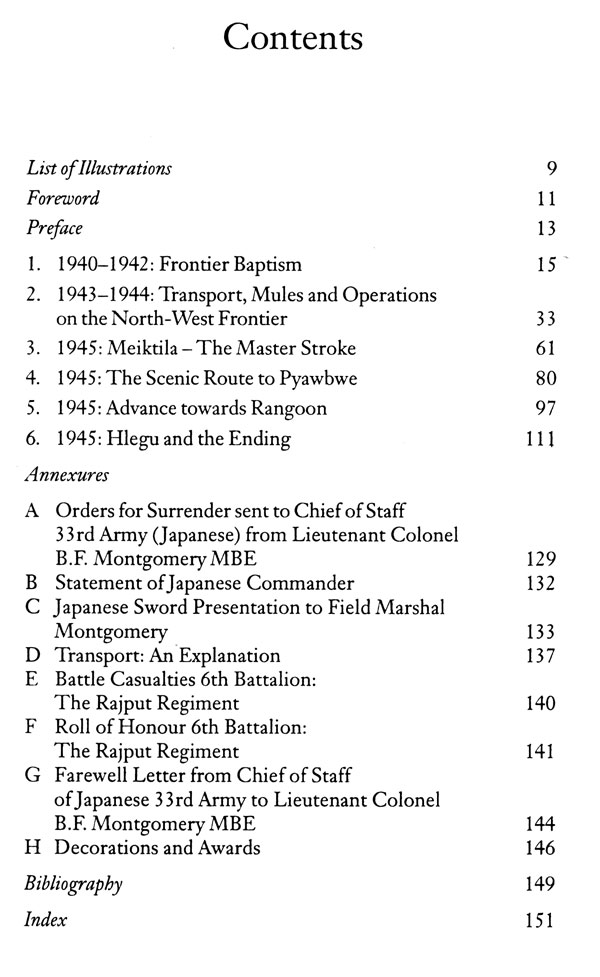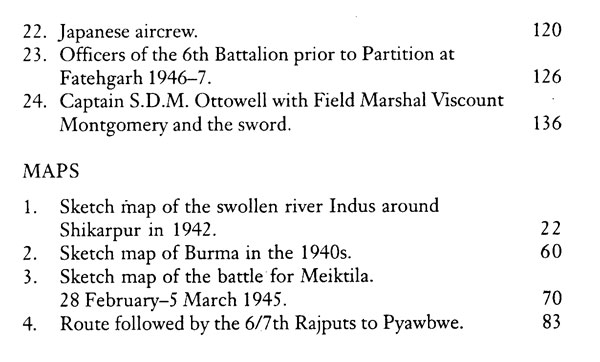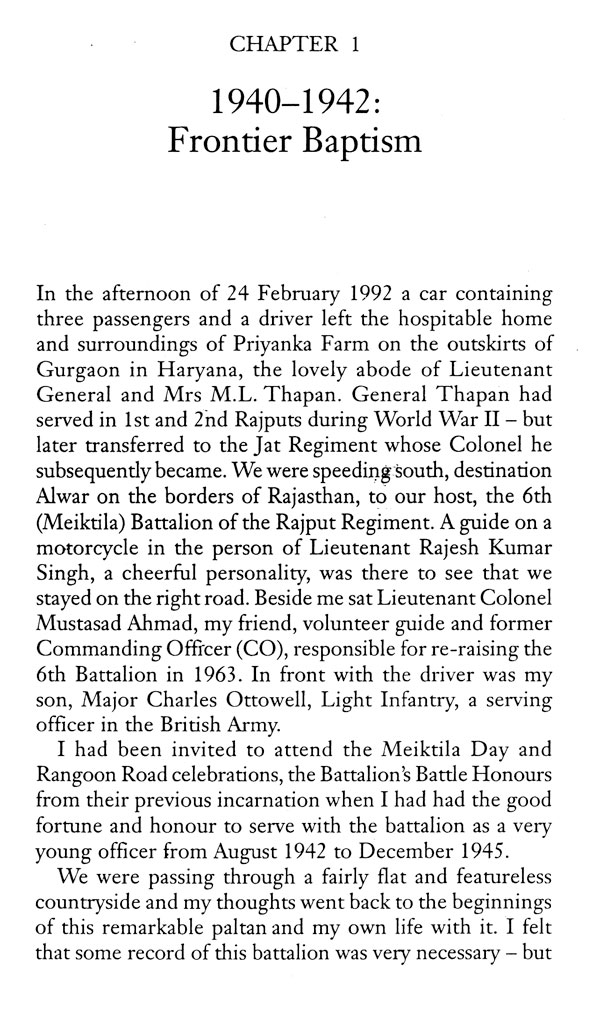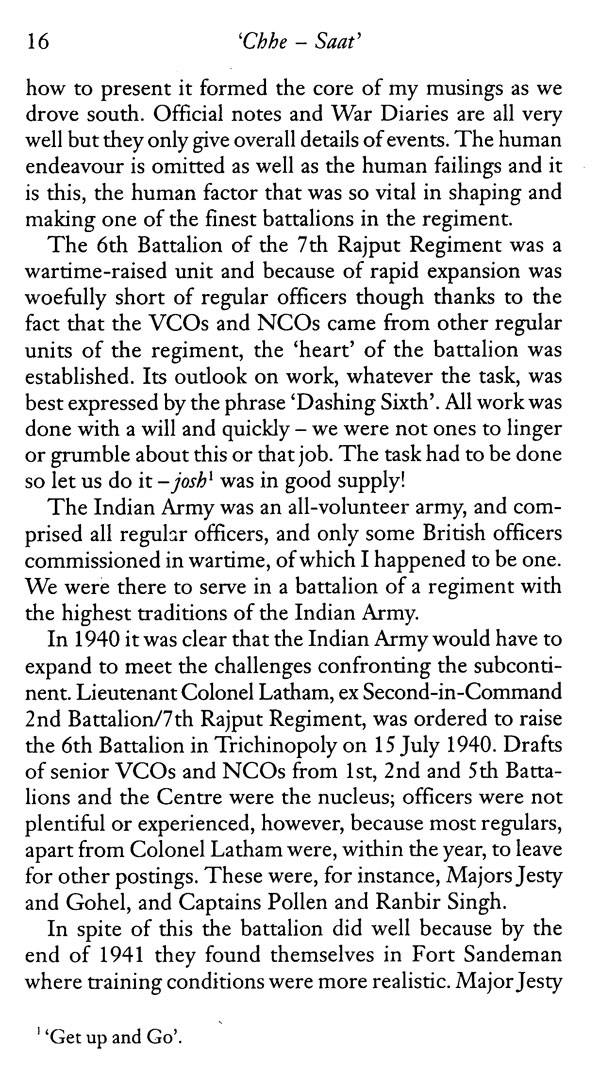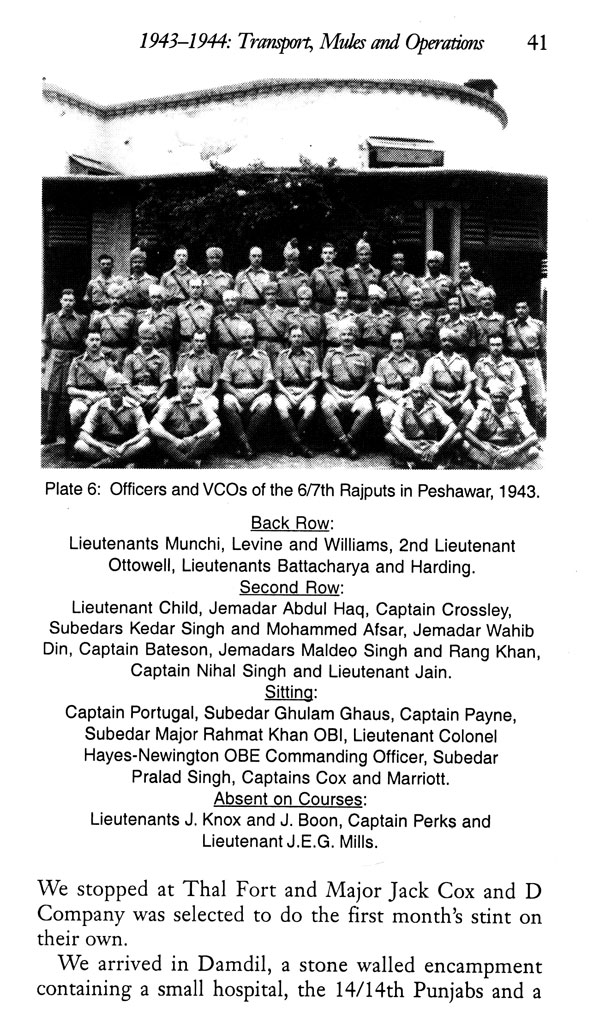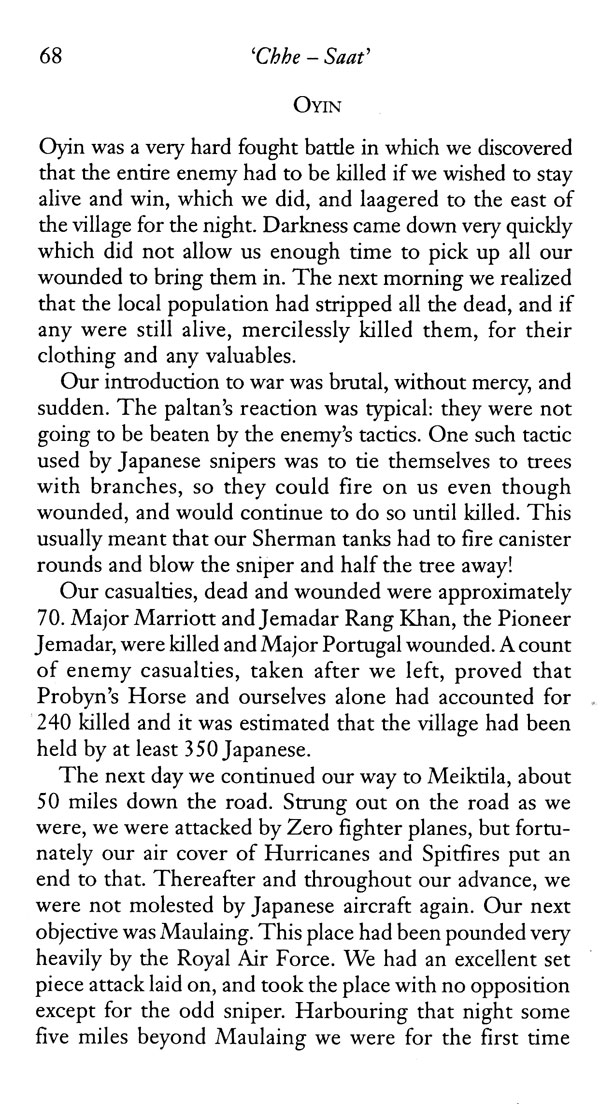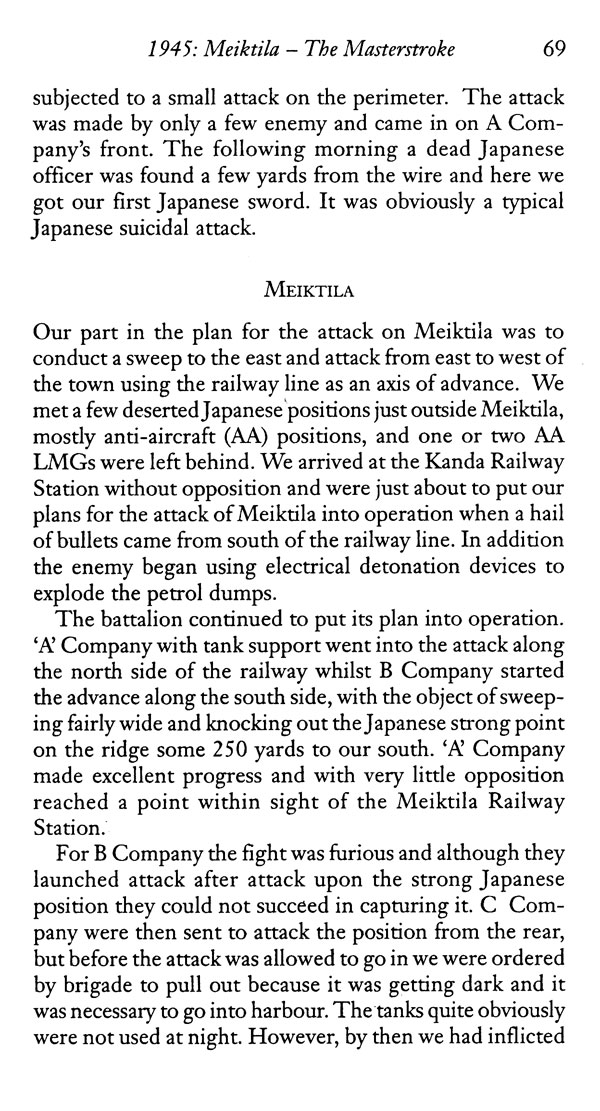
'Chhe - Saat' (Memoir of an Officer of the 6th/7th Rajput Regiment)
Book Specification
| Item Code: | NAZ777 |
| Author: | Stuart Ottowell |
| Publisher: | Manohar Publishers and Distributors |
| Language: | English |
| Edition: | 2008 |
| ISBN: | 9788173047633 |
| Pages: | 164 (28 B/W Illustrations) |
| Cover: | HARDCOVER |
| Other Details | 9.00 X 5.80 inch |
| Weight | 360 gm |
Book Description
The 6/7th Rajputs were raised at Trichinopoly in 1941 as a direct need for wartime expansion of the Indian Army. This memoir of the 6/7th's North-West Frontier days in 1942 to its fight south through Burma against the Japanese is a unique insight into the Rajputs' fighting qualities and attitude to life.
As the first wartime raised battalion in the Regiment it had the good fortune to attract well trained Senior VCOs, NCOs and Officers from the regular Rajput battalions, who all contributed to its development. It joined in activities on the North-West Frontier serving at Quetta, Peshawar, Damdil, Rasmak and on the Kojak Pass. Jungle training followed before joining 17 Indian Division at Ranchi then departing for Imphal and the final campaign in Burma, including the pivotal battle of Meiktila and then to Rangoon and beyond. The vital task was to ensure the successful containment of the 33rd Japanese Army in Southern Burma. Indicative of the Battalion's achievement and demonstrating the high esteem in which it was held, was a remarkable letter received from the Chief of Staff of the Japanese Army upon leaving Burma. There can be few equivalent plaudits in the annals of warfare. On his return to the UK in 1945 the author had the honour of presenting a Japanese sword to FM Montgomery on behalf of all Officers, VCOs and men of the 6th Battalion.
Stuart Ottowell held a wartime 'Emergency Commission' having passed out from Officer Training School (OTS) in 1942 at Belgaum. He chose the 7th Rajput Regiment and an active service battalion. After the War he sought a career in civilian life. He joined the Rajput Dinner Club (UK) in 1948 and subsequently became its Honorary Secretary. F.M. Cariappa attended the Club's 50th Dinner in 1973 and in 1998 the final Dinner was held under the author's Presidency. HRH the Duke of Edinburgh was the principal guest. Present and future Colonels of the Regiment, Lieutenant General H.S. Bagga VSM and Brigadier M.L. Naidu VSM attended. Since 1987 the author has been a frequent guest at the Regimental Reunions, and the Meiktila Day celebrations with the 6th Battalion.
The War Years, 1939-45, were times of vast upheaval, danger and death. It was a time when outrageous risks were taken by the main protagonists in the hope of winning the war — nations were on the march, the powerful oppressed the weak — allegiances and loyalties were changed at the drop of a hat.
Throughout this time the Indian Army stood firm and the 7th Rajput Regiment, one of the most senior regiments, having been raised in 1778, was there to play its Part in the defence of the subcontinent, in Burma and also in the Middle East.
In all theatres of war generals and their armies were trying to build on whatever localized success had been achieved, but the Germans and then the Japanese found out to their cost that units of the Indian Army were not only resilient but capable of responding in kind and finally securing complete defeat of the enemy.
This document records my personal remembrances, experiences and recollections of my service with the `Dashing Sixth' from 1942 to 1945. It endeavours to touch on the life and times we all lived through during those tumultuous years. I was immensely privileged and honoured to be a part of the 6th Battalion at that time. The 6th Battalion was raised, however, as a result of war and thus sadly, in this incarnation never really saw peace-time soldiering in pre- and post-war India.
Kohima, Imphal and Meiktila are the names of hard fought battles during the Burma Campaign of the Second World War. To commemorate the performance of Indian troops in these battles, the Gentlemen Cadet companies of the Indian Military Academy at Dehradun are named after these: Alamein in North Africa, Cassino and Sangro in Italy, and post-independence Naushera and Zojila are also thus honoured and preserved. As a Gentlemen Cadet I had the honour to have been in Meiktila Company for two years before being commissioned into the Rajput Regiment in June 1956. Later, as I settled down in the service, my interest in military history was stimulated by talking to regimental veterans of many of the famous actions of the Second World War in North Africa and Burma. Three of our famous old battalions, the 1st, 2nd and 4th were present in Burma. Of the war raised battalions, the 6th earned four battle honours in a row: `Capture of Meiktila', `Meiktila', 'Defence of Meiktila' and `Rangoon Road' which spoke of an unusual and out-standing performance.
Stuart Ottowell's ‘Chhe — Saat' provides a first hand account of how this newly formed infantry battalion, led by a remarkable Commanding Officer and an innovative bunch of officers, VCOs (JCOs) and NCOs — which in-cluded the author, could quickly adapt to operating with armour with great élan and flexibility in and around Meiktila. Stuart Ottowell's narration is remarkable as it focuses on events that occurred more than sixty years ago. Veterans of the 'Burma Star' generation, now in their eighties, can again relive some of the events of those far off days.
Book’s Content and Sample Pages
